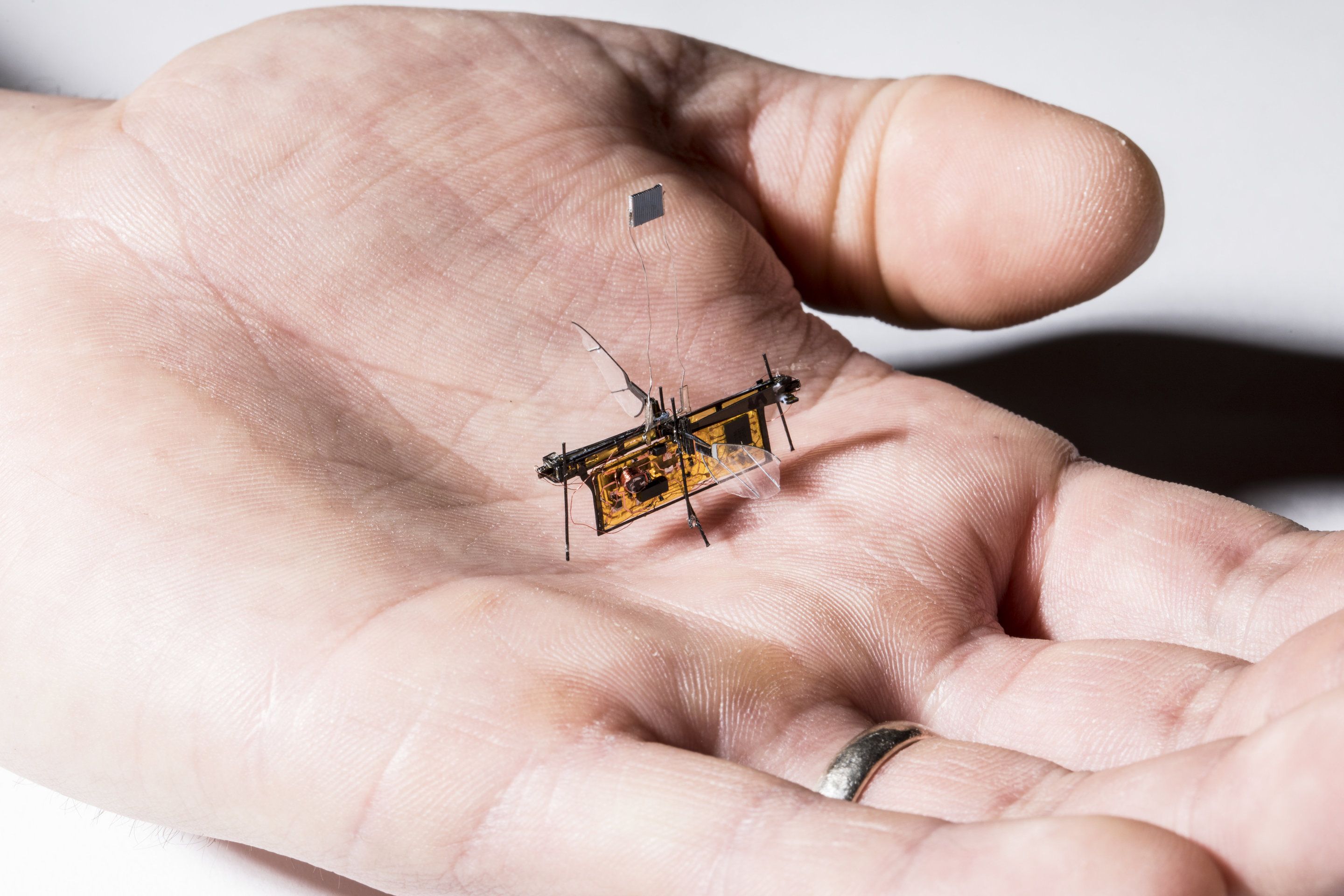This flying camera drone will put your selfie skills to shame. Buy it here: https://amzn.to/2xvPgDp
Category: drones – Page 136

MIT fed an AI data from Reddit, and now it thinks of nothing but murder
The point of the experiment was to show how easy it is to bias any artificial intelligence if you train it on biased data. The team wisely didn’t speculate about whether exposure to graphic content changes the way a human thinks. They’ve done other experiments in the same vein, too, using AI to write horror stories, create terrifying images, judge moral decisions, and even induce empathy. This kind of research is important. We should be asking the same questions of artificial intelligence as we do of any other technology because it is far too easy for unintended consequences to hurt the people the system wasn’t designed to see. Naturally, this is the basis of sci-fi: imagining possible futures and showing what could lead us there. Issac Asimov gave wrote the “Three Laws of Robotics” because he wanted to imagine what might happen if they were contravened.
Even though artificial intelligence isn’t a new field, we’re a long, long way from producing something that, as Gideon Lewis-Kraus wrote in The New York Times Magazine, can “demonstrate a facility with the implicit, the interpretive.” But it still hasn’t undergone the kind of reckoning that causes a discipline to grow up. Physics, you recall, gave us the atom bomb, and every person who becomes a physicist knows they might be called on to help create something that could fundamentally alter the world. Computer scientists are beginning to realize this, too. At Google this year, 5,000 employees protested and a host of employees resigned from the company because of its involvement with Project Maven, a Pentagon initiative that uses machine learning to improve the accuracy of drone strikes.
Norman is just a thought experiment, but the questions it raises about machine learning algorithms making judgments and decisions based on biased data are urgent and necessary. Those systems, for example, are already used in credit underwriting, deciding whether or not loans are worth guaranteeing. What if an algorithm decides you shouldn’t buy a house or a car? To whom do you appeal? What if you’re not white and a piece of software predicts you’ll commit a crime because of that? There are many, many open questions. Norman’s role is to help us figure out their answers.

Google Plans Not to Renew Its Contract for Project Maven, a Controversial Pentagon Drone AI Imaging Program
Google ends Pentagon contract to develop AI for recognising people in drone videos after 4,000 employees signed an open letter saying that Google’s involvement is against the company’s “moral and ethical responsibility”.
Google will not seek another contract for its controversial work providing artificial intelligence to the U.S. Department of Defense for analyzing drone footage after its current contract expires.
Google Cloud CEO Diane Greene announced the decision at a meeting with employees Friday morning, three sources told Gizmodo. The current contract expires in 2019 and there will not be a follow-up contract, Greene said. The meeting, dubbed Weather Report, is a weekly update on Google Cloud’s business.
Google would not choose to pursue Maven today because the backlash has been terrible for the company, Greene said, adding that the decision was made at a time when Google was more aggressively pursuing military work. The company plans to unveil new ethical principles about its use of AI next week. A Google spokesperson did not immediately respond to questions about Greene’s comments.
TIME’s Latest Cover Photo is a Drone Photo of 958 Drones
TIME magazine’s latest issue is a special report on the rapid explosion of drones in our culture. For the cover photo, TIME recreated its iconic logo and red border using 958 illuminated drones hovering in the sky. It’s the first-ever TIME cover captured with a camera drone.
To create the photo, TIME partnered with Intel’s Drone Light Show team (which creates beautiful sky displays using hundreds of drones at a time) and Astraeus Aerial Cinema Systems to fly and capture (respectively) the 958 drones above Folsom, California (where Intel has a campus).
The project was one of the biggest drone shows ever done in the United States — it’s a display measuring 100 meters (~328 feet) tall:

The first wireless flying robotic insect takes off
Insect-sized flying robots could help with time-consuming tasks like surveying crop growth on large farms or sniffing out gas leaks. These robots soar by fluttering tiny wings because they are too small to use propellers, like those seen on their larger drone cousins. Small size is advantageous: These robots are cheap to make and can easily slip into tight places that are inaccessible to big drones.
But current flying robo-insects are still tethered to the ground. The electronics they need to power and control their wings are too heavy for these miniature robots to carry.
Now, engineers at the University of Washington have for the first time cut the cord and added a brain, allowing their RoboFly to take its first independent flaps. This might be one small flap for a robot, but it’s one giant leap for robot-kind. The team will present its findings May 23 at the International Conference on Robotics and Automation in Brisbane, Australia.
Architects behind Apple’s “spaceship” unveil new building for drone giant DJI
A skybridge for flight tests & robot fighting rings. Welcome to DJI’s new Shenzhen digs.

Carbon kinetic weapons
Future wars could be much more fierce with weapons even more powerful than nukes:
The world is progressing in many ways, but tribalism isn’t going away, so new arms races in AI, drones, bio-weapons and space weapons are already under way. Forewarned is forearmed. What sort of weaponry should we expect? I’ve discussed AI and bio approaches before on other blogs, so this one looks just at kinetic weaponry using advanced materials, coupled to EM acceleration systems.
https://carbondevices.com/2017/08/31/using-inverse-rail-guns…ce-launch/ shows a crude illustration of my invention, the inverse rail gun, which inverts the idea of using a slug on a short rail gun and uses the short rail gun to accelerate a long tape instead.

NASA plans to send mini-helicopter to Mars
The US space agency said Friday it plans to launch the first-ever helicopter to Mars in 2020, a miniature, unmanned drone-like chopper that could boost our understanding of the Red Planet.
Known simply as “The Mars Helicopter,” the device weighs less than four pounds (1.8 kilograms), and its main body section, or fuselage, is about the size of a softball.
It will be attached to the belly pan of the Mars 2020 rover, a wheeled robot that aims to determine the habitability of the Martian environment, search for signs of ancient life, and assess natural resources and hazards for future human explorers.

US commercial drones given green light
Drones that monitor crops, control mosquito populations and deliver defibrillators are to be tested in US airspace.
Ten commercial drone projects have been selected to try out new ways for unmanned aircraft to be integrated into the skies.
They include Zipline, which currently offers a blood-delivery service in Rwanda, and Apple.
